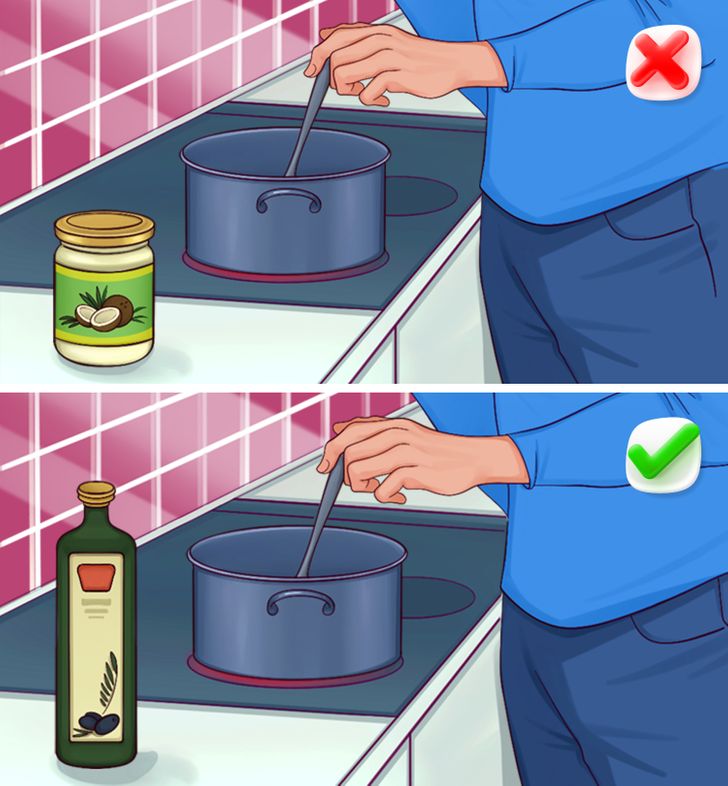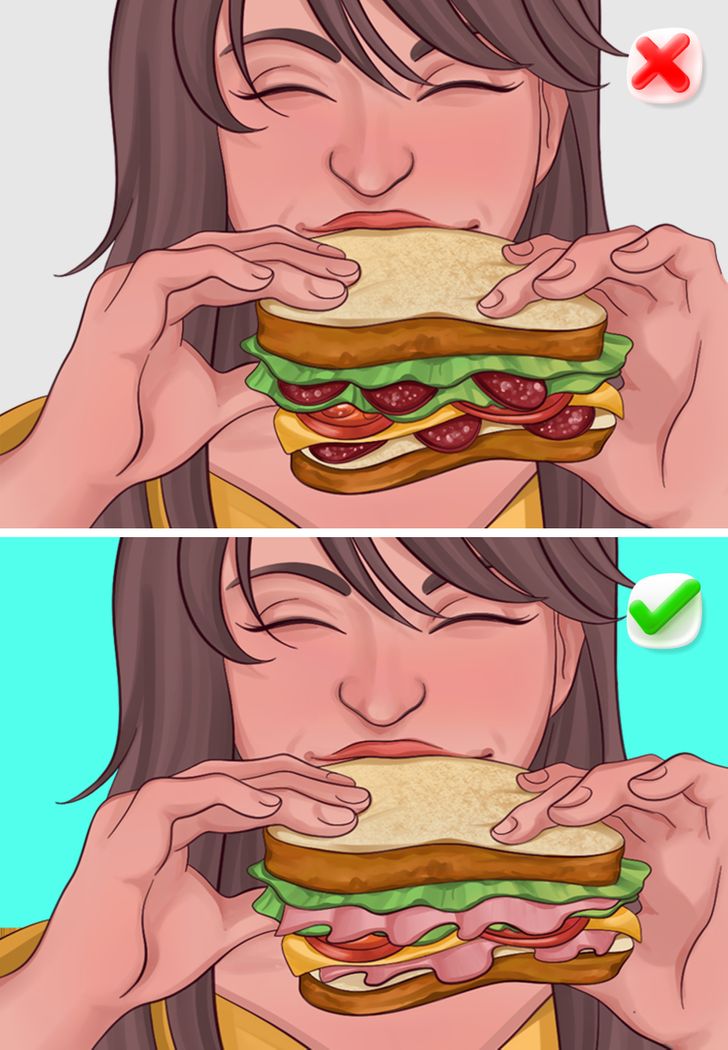What Fats Are For and Why We Need Them
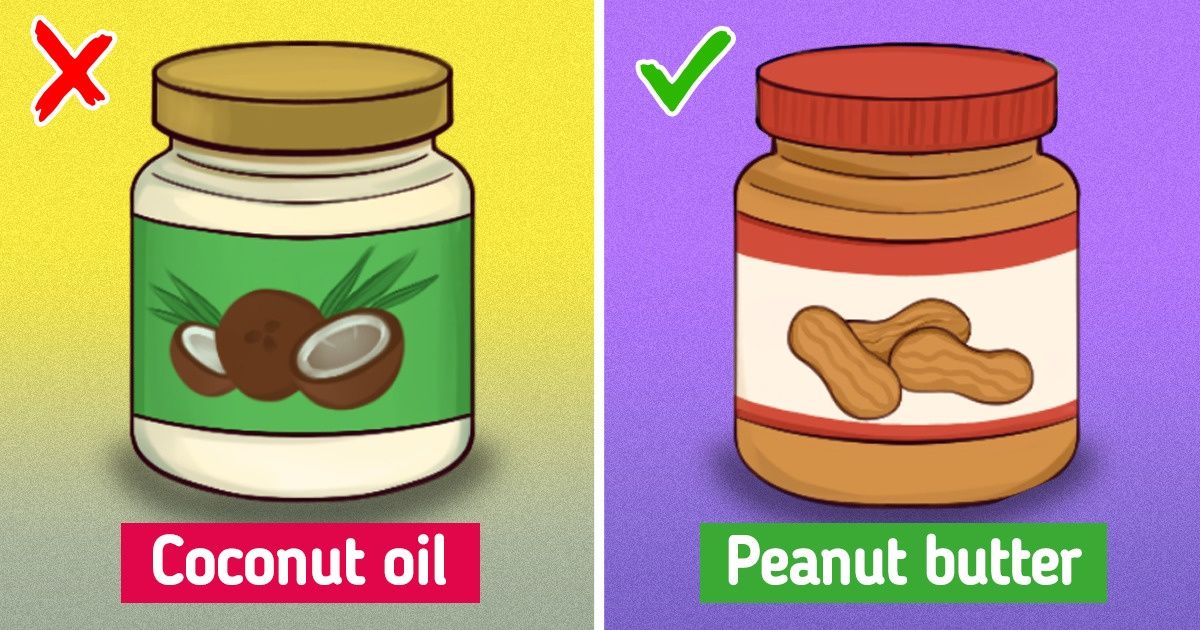
Fats are a source of energy and the body requires them to function properly, as long as they are consumed in moderation. They are found in both “healthy” and unhealthy forms in different food groups, especially in those from milk, meat, and oils. At the same time, they are present in fried, baked, and packaged products.
5-Minute Crafts prepared a simple guide to help you identify the different types of fats and their main characteristics.
Types of healthy fats
Unsaturated
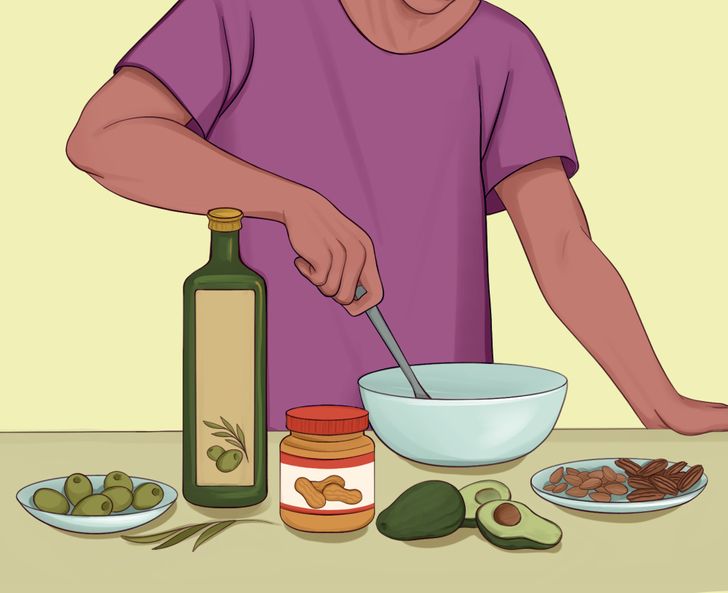
These fats are usually liquid at room temperature and are found in vegetable oils, fish, and nuts. They are considered “healthy” as they can be beneficial to the heart if consumed in place of saturated fats, thus decreasing the risk of heart disease or a cardiovascular issues.
Unsaturated fats are divided into:
- Monounsaturated fats: these are present in natural foods like olive oil, olives, avocados, peanut butter, almonds, and pecans. These types of fats help develop and maintain healthy cells.
- Polyunsaturated fats: They are found in vegetable oils like sunflower, soybean, and corn oil, and in fatty fish. Like other fats that are considered “healthy,” they can help lower bad cholesterol if consumed properly. Polyunsaturated fats include omega-3 and omega-6 fatty acids.
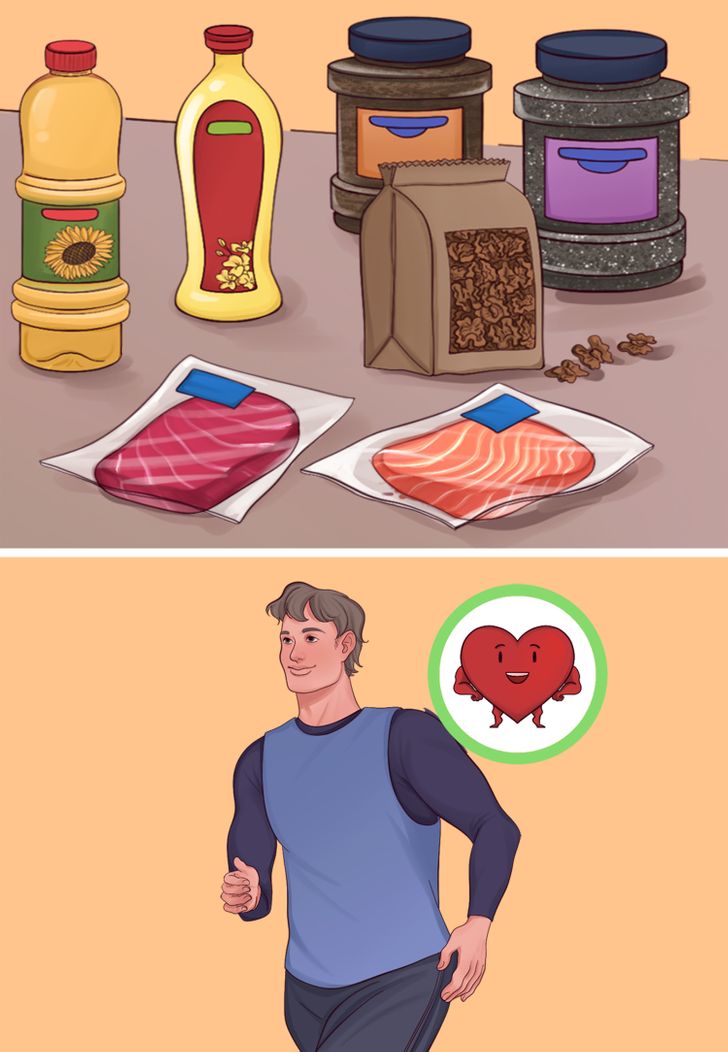
- Omega-3 fatty acids: They are capable of reducing triglycerides in the blood and the risk of developing cardiac disorders such as arrhythmia. They can be found in fatty fish like salmon, sardines, tuna, and herring. Other sources include walnuts, chia and flaxseeds, and canola oil.
- Omega-6 fatty acids: They can actually help reduce the risk of type 2 diabetes. They are found in vegetable oils like sunflower and soybean oil.
Types of unhealthy fats
Saturated

They are solid at room temperature. They are present in products like pork fat, lard, chicken skin, ice cream, and cheese. At the same time, coconut and palm oils also contain saturated fats.
Because they belong to the group of unhealthy fats, it is recommended to reduce their intake to less than 7% of your daily calories, as they are capable of increasing cholesterol levels, resulting in an increased risk for heart disease and cardiovascular issues.
Hydrogenated or trans
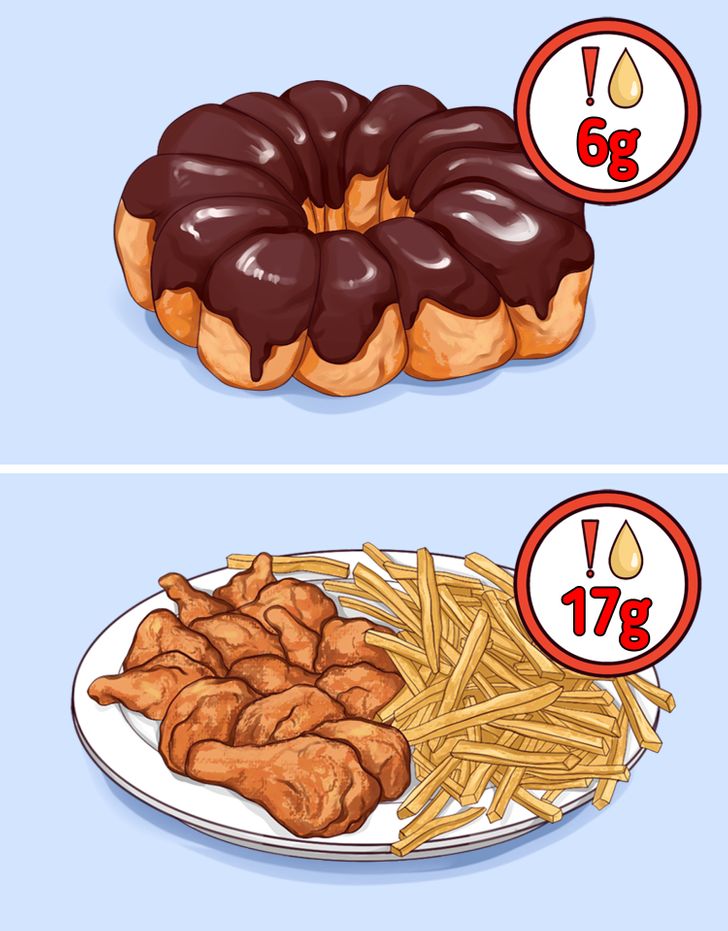
Natural trans fats come from ruminant animals, like sheep and goats, while artificial trans fats derive from the process of hydrogenation. These unhealthy fats are often used in the production of restaurant foods, and some products may contain them in very high amounts.
They are also present in processed foods, like frozen pizza, cookies, certain types of margarines, and salad dressings, so it is always suggested that you check the nutritional information label. It is recommended to avoid them or consume as little as possible due to their harmful effects on your health.
Why we need to consume fats
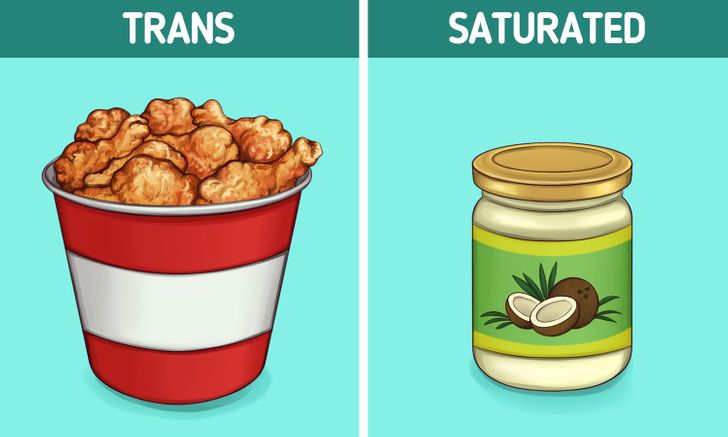
Fat consumption is essential for the growth and proper functioning of the body. Without them, the body would be unable to perform certain vital processes.
Among them, the following stand out:
- Helping to absorb fat-soluble vitamins, like vitamin A, D, E, and K.
- Helping people to feel satiety, decreasing the probability of overeating.
- Helping to reserve energy in the body.
- Helping to reduce the glycemic impact of certain meals.
Although healthy fats play an important role in health, their intake should always be kept under control, as they can lead to weight gain and increase the risk of developing heart disease, diabetes, and hypertension, among others.
General tips to maintain a healthy diet
